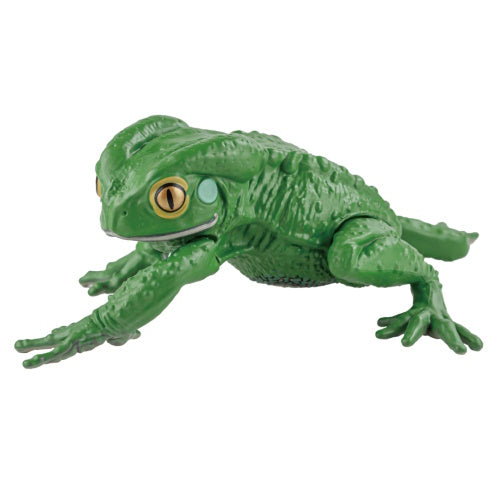Discover Exotic Rain Frog for Sale: Your Gateway to Unique Amphibian Family Pets!
Discover Exotic Rain Frog for Sale: Your Gateway to Unique Amphibian Family Pets!
Blog Article
The Very Best Reptile Enclosures: Just How to Produce the Suitable Habitat
Producing the excellent habitat for reptiles is not practically putting them in a tank or unit; it includes a thoughtful consideration of different factors that add to their overall wellness. From the dimension of the unit to the sort of substrate made use of, every component plays an essential duty in supplying a setting where your reptile can grow. By recognizing the particular requirements of your reptile types and executing the right environment configuration, you can ensure their health and happiness in captivity.
Choosing the Right Enclosure Size
When choosing an unit dimension for reptiles, it is imperative to consider their natural actions and room requirements to guarantee their well-being and wellness. Various reptile varieties have varying demands when it comes to habitat area. Arboreal species like chameleons or tree serpents need vertical room for perching and climbing up, while terrestrial types such as bearded dragons or leopard geckos require more flooring space for exploring and thermoregulation. Marine turtles like red-eared sliders demand rooms with both water and acreage for swimming and basking.
A general rule of thumb is to give ample space for the reptile to display all-natural behaviors, such as basking, hiding, climbing, and foraging. By thoroughly taking into consideration the details requirements of the reptile species in concern, owners can develop an ideal and improving habitat that promotes overall wellness and encourages natural actions.
Establishing Appropriate Home Heating Aspects
To guarantee the health and wellness of reptiles in their rooms, it is necessary to very carefully establish appropriate home heating aspects. Reptiles are ectothermic creatures, implying they rely upon external warm sources to control their body temperature level. When setting up burner in a reptile enclosure, it is essential to consider the specific temperature level needs of the species you are looking after. Various reptiles have differing temperature level requires based upon their all-natural environment, so it is vital to research and comprehend these requirements.
One reliable and common home heating component for reptile enclosures is a heat lamp or ceramic warm emitter. These warmth sources can be used to produce a temperature level gradient within the enclosure, enabling reptiles to move in between warmer and cooler locations as required. In addition, under-tank hot pad or warm floor coverings try these out can be used to supply tummy warmth, which is especially helpful for reptiles that require additional warmth to assist in food digestion.
Checking the temperature level within the unit using a thermometer is crucial to make certain that the heating elements are keeping the appropriate temperature variety for your reptile. Routinely examine and adjust the heating aspects as required to create a healthy and comfortable environment for your scaly friend.
Picking Appropriate Lighting Fixtures

Supplying the Suitable Substrate
Choosing the suitable substratum is essential for creating Website a appropriate and comfortable setting for reptiles in their units. Some reptiles, such as desert-dwelling varieties like bearded dragons, prosper on substrates like calcium sand or reptile carpeting, while others, like round pythons, choose coconut husk or aspen bedding to preserve humidity degrees.
Prevent substratums that can trigger impaction, such as loose substrates like sand or gravel, particularly for reptiles understood to consume their bed linens. Routinely cleansing and changing the substrate is vital to ensure a clean and hygienic environment for your reptile.
Decorating for Enrichment and Comfort
Considering the substratum's function in providing a structure for natural habits and preserving a suitable atmosphere, improving the reptile enclosure with proper decorations is critical for both enrichment and comfort. When decorating the room, it is essential to consider the reptile's species-specific needs and actions to develop a room that advertises psychological and physical well-being. By incorporating a selection of decorations that simulate the reptile's natural habitat, owners can guarantee their pet's comfort and boost their natural reactions, ultimately leading to a better and healthier reptile.
Conclusion

Producing the perfect habitat for reptiles is not just about putting them in a container or enclosure; it includes a thoughtful factor to consider of different factors that contribute to their overall health.Choosing the proper substrate is necessary for developing a appropriate and comfortable environment for reptiles in their this contact form enclosures. Some reptiles, such as desert-dwelling species like bearded dragons, flourish on substratums like calcium sand or reptile rug, while others, like sphere pythons, choose coconut husk or aspen bed linens to keep moisture levels.
By incorporating a range of decors that simulate the reptile's all-natural habitat, owners can ensure their family pet's convenience and promote their all-natural instincts, ultimately leading to a better and much healthier reptile.
In conclusion, creating the optimal environment for reptiles includes choosing the suitable enclosure size, heating elements, lighting components, substratum, and designs.
Report this page